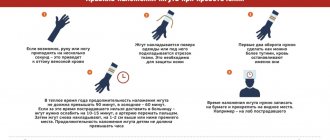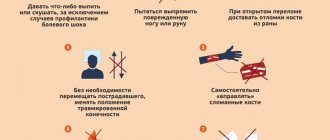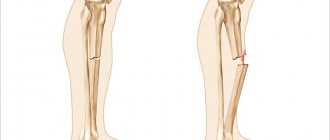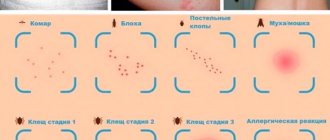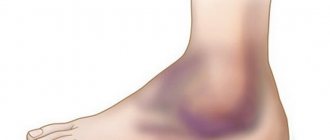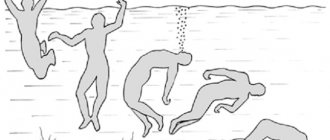Bleeding is a severe traumatic injury. Among all its types, arterial is considered the most dangerous. After all, untimely or incorrectly provided first aid for arterial bleeding can result in unpleasant consequences for the patient, including death.
There is an opinion that only medical workers should have knowledge, as well as practical skills in providing first aid, because this is their direct responsibility. In fact, it is the duty of every person to know and be able to apply basic medical skills in practice. After all, one day it may help save a human life.
In case of arterial bleeding, first aid should be provided immediately. After all, blood is lost at a very high speed, and there is practically no time for thought. In such a situation, a clear algorithm of actions helps, which needs to be worked out until it becomes automatic.
Distinctive signs of arterial bleeding
The classification of bleeding implies its division into three main types:
- arterial,
- venous,
- capillary.
With extensive traumatic injuries, mixed bleeding, for example, venous and arterial, can be observed. In addition, any bleeding, relative to where the blood flows, is divided into internal (in the body cavity) and external (into the external environment). First aid for internal bleeding, as well as its diagnosis itself, is carried out exclusively by medical staff. External bleeding is easier to diagnose and can be treated by anyone.
Arterial bleeding occurs due to damage to the arterial trunks - the vessels that carry oxygenated blood from the cavities of the heart to all tissues of the body. Venous-type bleeding develops when the integrity of the veins that collect blood saturated with carbon dioxide and carry it to the heart is disrupted. Capillary bleeding occurs due to traumatization of capillaries - small vessels that are directly involved in tissue gas exchange.
External differences in types of bleeding
With arterial bleeding, the color of the flowing blood is bright red or scarlet, in contrast to venous bleeding, in which the blood is dark red and comes out slowly. In the case of arterial damage, blood is released rapidly, in a gushing stream. At the same time, the blood stream pulsates, each portion of it comes out synchronously with the pulse and heartbeat. This is due to high pressure in the arterial vessels that come directly from the heart.
In case of arterial bleeding, if help is not provided in time, the phenomena of hemorrhagic shock quickly increase - a pathological condition due to significant blood loss. It has the following symptoms:
- drop in blood pressure;
- increased heart rate;
- pallor and marbling of the skin;
- cyanosis of the extremities;
- respiratory disorders;
- decreased diuresis;
- severe weakness;
- dizziness;
- cold extremities;
- loss of consciousness.
Attention! The faster a person loses blood, the more pronounced the symptoms of shock are, since the body does not have time to compensate for the blood loss.
First aid
The most important role in emergency care for bleeding of arterial origin is played by the time factor: for maximum effectiveness it should be provided no later than 2-3 minutes from the moment of injury. If it concerns the main arterial trunks, then bleeding from them must be stopped no later than 1-2 minutes after the injury. Otherwise, the chances of a successful outcome will decrease every second with every milliliter of blood lost.
Important! No matter how critical the conditions, before helping others, protect yourself first - put on rubber gloves from your travel first aid kit, and if you don’t have them, minimize contact with blood using available items (for example, cellophane).
The algorithm for stopping any arterial bleeding is as follows:
- Assessing the type of bleeding.
- Finger pressure on an artery that is damaged.
- Applying a tourniquet, applying maximum limb flexion or a pressure bandage.
- Applying an aseptic dressing to the wound.
This sequence of actions may vary slightly depending on the characteristics of the damaged anatomical area.
Methods to stop bleeding can be temporary or permanent. Temporary arrest of arterial bleeding is used at the stage of first premedical and medical care. The final stage is carried out in a hospital and is part of the hospital stage of care. It is worth noting that in some cases, temporary stopping measures are enough to completely stop the bleeding.
Indications/contraindications for use
If you are not confident in your own abilities, the condition of the victim, or are holding a tourniquet in your hands for the first time, wait for the doctors to arrive or try to deliver the person to a medical facility as soon as possible. Unprofessional actions will only aggravate the person’s condition, but will not help in the current situation. To avoid a painful choice, get trained and learn how to provide first aid.
| Indications | Contraindications | ||
| Absolute | Relative | Absolute | Relative |
| Limb amputation | Minimizing blood loss during surgery | Presence of acute infection of the affected limb | Vascular diseases (for example, thrombosis, atherosclerosis and others) |
| Long-term compartment syndrome | Prolongation of local/regional anesthesia | Minor blood loss (mostly from small vessels) that can be controlled with compression and tight bandaging | |
| Trauma to a large vessel (provided that blood loss cannot be stopped by other methods) | Injury to a limb in which it is impossible to determine the intensity of blood loss and its danger to the victim (a tourniquet is applied until the condition is clarified, after which it is left or replaced with a pressure bandage) | ||
Finger pressure
This technique should be used as a starting one when assisting a wounded person. The basic principles of digital compression depend on the anatomical region in which the artery injury occurred. The general rule is that the vessel should be pressed above the site of injury. But if bleeding occurs in the neck or head area, then the vessels are compressed downward from the wound. This is explained by the fact that the arteries in this area go upward from the heart.
Attention! When using any methods to stop bleeding, you need to lift the affected limb upward to reduce blood flow to it.
Damaged arterial vessels must be pressed against the bony protrusions, as they can slip out, and then bleeding will resume.
Places where arteries are pressed during bleeding
To better remember the method, you can use the 3D mnemonic rule:
- “Press.”
- "Ten".
- "Ten".
It means that you need to press the artery by pressing with ten fingers of both hands for 10 minutes, after which it is recommended to check whether the bleeding has stopped. If it is stopped, and this happens if it is not the main arterial vessel that is damaged, then you can limit yourself to applying a pressure aseptic dressing to the wound.
Since the blood pressure in the arteries is very high, it will take a lot of effort to apply pressure to the vessel and stop the bleeding. Finger pressure is a method of temporarily stopping bleeding, so while one person is pressing the artery, the second should already be looking for a tourniquet and dressing material. There should be no time wasted taking off clothes or freeing limbs. At the same time, one of the eyewitnesses must immediately call an ambulance to provide first aid and transport the victim to a hospital.
The biggest disadvantages of the finger pressing technique are:
- significant pain for the injured person;
- physical fatigue of the person providing emergency assistance.
Speed of execution is considered the most important advantage of temporarily stopping external arterial bleeding using finger pressure.
Penetrating chest injury
- close the hole tightly
- apply cold
- not allowed to speak
- breathe deeply
Signs and symptoms of penetrating chest injury
- white or bloody foam at the mouth
- the same one at the wound site
Glue the bag, a piece of plastic with tape or adhesive tape, check: if there is an entrance hole, then there may be an exit hole (in the case of a gunshot wound, it can be 10 times larger than the entrance hole), if it is small, you can seal it.
Maximum fixed limb flexion
In some cases, you can use maximum flexion of the limbs as a method of temporarily stopping bleeding from the artery. It should be performed after making sure that the victim does not have a fracture of the injured limb.
A thick pad should be placed at the bend of the limb (popliteal, elbow and groin areas) to compress the damaged artery at maximum flexion
After inserting the roller, the bent arm or leg is fixed to the patient’s body. Such actions are aimed at temporarily stopping bleeding, and if they are ineffective, one should prepare to apply an arterial tourniquet. This same technique, even when performed correctly, has questionable effectiveness.
Applying a tourniquet for arterial bleeding
Stopping bleeding from an artery by applying a tourniquet is a temporary method of stopping bleeding. The task of everyone who helps the victim is to correctly perform the technique of applying a tourniquet and ensure the delivery of the wounded person to a medical facility.
A tourniquet should be applied only in case of severe arterial bleeding. In all other cases, you should try to stop the bleeding with digital compression or a pressure bandage. A pressure bandage is made in case of arterial bleeding from a whole roll of sterile bandage, which is tightly fixed to the wound surface.
If the rules for applying a tourniquet are violated, sad consequences may occur: necrosis, gangrene, damage to nerve trunks
This is especially true for the shoulder region, because the radial nerve is located superficially there. A tourniquet is applied to the middle third of the shoulder only as a last resort. It is better to choose a place higher or lower. One of the available means can be used as a tourniquet: a wide rope, a belt or a scarf.
Attention! A homemade tourniquet should not be too thin, as this can cause tissue necrosis.
So how to apply a tourniquet during arterial bleeding so as not to harm the patient in the future? By remembering a few basic rules, you can avoid a lot of mistakes.
The algorithm for applying a tourniquet is as follows:
- Select a place to apply the tourniquet. It is located above the site of damage, but as close as possible to it (the optimal distance is 2-3 cm). We should not forget about injuries to the neck and head - there a tourniquet is used below the wound. If the femoral artery is damaged, it is compressed at the level of the middle third of the thigh, and if there is bleeding from the arm, it is compressed in the upper or lower third of the shoulder.
- Wrap the selected area with cloth, gauze or bandage.
- The limb should be in an elevated position.
- The tourniquet is stretched and made several turns around the limb. In this case, its first turn is made with greater, and all subsequent turns with less effort. If large arterial trunks are damaged, for example, the femoral artery, it makes sense to apply two tourniquets - one higher, the other lower.
- Its ends are tied into a knot or secured with a special chain or hook.
- The correct application of the tourniquet is checked: pulsation of the injured artery below the injury is not palpable, and bleeding from the wound stops.
- The exact time of application of the tourniquet is recorded. This can be done on a piece of paper, which is inserted under the tourniquet itself, directly on the patient’s body near the site of injury, or on clothing.
- An aseptic bandage is applied to the wound.
In case of injuries to the carotid artery, the tourniquet is applied below the injury, but it should not compress the artery of the same name on the other side. To do this, a tight roller is applied on the side of the injury, and a tourniquet is fixed on the opposite side through the patient’s raised arm and an attached flat board.
Correct application of a tourniquet according to Mikulicz for injury to the carotid artery
The tourniquet should not be applied too tightly, since applying the tourniquet correctly means applying minimal pressure to stop the bleeding. In this case, the blood supply should be carried out through deep arteries and veins, and in no case should it stop completely.
If the tourniquet is applied too tightly, it can lead to necrosis of the limb, followed by amputation.
The time factor is also important here. The maximum time for applying a tourniquet varies depending on the ambient temperature:
- in summer - for 1 hour;
- in winter - for 30 minutes.
If a longer time interval is required to transport the victim to the nearest hospital, the tourniquet is temporarily removed, switching to 10 minutes of finger pressure. Then you need to apply a tourniquet again according to the rules described above.
Sources
- Zideman DA., Singletary EM., Borra V., Cassan P., Cimpoesu CD., De Buck E., Djärv T., Handley AJ., Klaassen B., Meyran D., Oliver E., Poole K. European Resuscitation Council Guidelines 2021: First aid. // Resuscitation - 2021 - Vol161 - NNULL - p.270-290; PMID:33773828
- Gyedu A., Stewart B., Otupiri E., Donkor P., Mock C. First Aid Practices for Injured Children in Rural Ghana: A Cluster-Random Population-Based Survey. // Prehosp Disaster Med - 2021 - Vol36 - N1 - p.79-85; PMID:33491619
- Singletary EM., Zideman DA., Bendall JC., Berry DA., Borra V., Carlson JN., Cassan P., Chang WT., Charlton NP., Djärv T., Douma MJ., Epstein JL., Hood NA ., Markenson DS., Meyran D., Orkin A., Sakamoto T., Swain JM., Woodin JA., De Buck E., De Brier N., O D., Picard C., Goolsby C., Oliver E ., Klaassen B., Poole K., Aves T., Lin S., Handley AJ., Jensen J., Allan KS., Lee CC., De Buck E., De Brier N., O D., Picard C ., Goolsby C., Oliver E., Klaassen B., Poole K., Aves T., Lin S., Handley AJ., Jensen J., Allan KS., Lee CC. 2021 International Consensus on First Aid Science With Treatment Recommendations. // Resuscitation - 2021 - Vol156 - NNULL - p.A240-A282; PMID:33098920
- Singletary EM., Zideman DA., Bendall JC., Berry DC., Borra V., Carlson JN., Cassan P., Chang WT., Charlton NP., Djärv T., Douma MJ., Epstein JL., Hood NA ., Markenson DS., Meyran D., Orkin AM., Sakamoto T., Swain JM., Woodin JA., De Buck E., De Brier N., O D., Picard C., Goolsby C., Oliver E ., Klaassen B., Poole K., Aves T., Lin S., Handley AJ., Jensen J., Allan KS., Lee CC., Schmölzer GM., Morley PT., Nieuwlaat R., Lang E. 2021 International Consensus on First Aid Science With Treatment Recommendations. // Circulation - 2020 - Vol142 - N16_suppl_1 - p.S284-S334; PMID:33084394
- Chang KC., Huang YK., Chen YW., Chen MH., Tu AT., Chen YC. Venom Ophthalmia and Ocular Complications Caused by Snake Venom. // Toxins (Basel) - 2021 - Vol12 - N9 - p.; PMID:32911777
- Coughlin DJ., Boulter JH., Miller CA., Curry BP., Glaser J., Fernandez N., Bell RS., Schuette AJ. An Endovascular Surgery Experience in Far-Forward Military Healthcare-A Case Series. // Mil Med - 2021 - Vol185 - N11-12 - p.2183-2188; PMID:32812042
- Sumardino S., Widodo., Poddar. Analysis of pre hospital emergency management in case of head injury. // Enferm Clin - 2020 - Vol30 Suppl 5 - NNULL - p.228-233; PMID:32713577
- Goolsby C., Rojas LE., Rodzik RH., Gausche-Hill M., Neal MD., Levy MJ. High-School Students Can Stop the Bleed: A Randomized, Controlled Educational Trial. // Acad Pediatr - 2021 - Vol21 - N2 - p.321-328; PMID:32473216
- Menger R., Lin J., Cerpa M., Lenke LG. Epidural hematoma due to Gardner-Wells Tongs placement during pediatric spinal deformity surgery. // Spine Deform - 2021 - Vol8 - N5 - p.1139-1142; PMID:32314179
- Zhao YF., Zhao JY., Hu WZ., Ma K., Chao Y., Sun PJ., Fu XB., Zhang H. Synthetic poly(vinyl alcohol)-chitosan as a new type of highly efficient hemostatic sponge with blood -triggered swelling and high biocompatibility. // J Mater Chem B - 2021 - Vol7 - N11 - p.1855-1866; PMID:32255048
